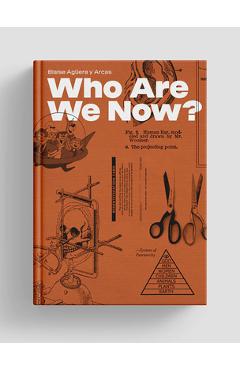Who Are We Now? - Blaise Aguera Y. Arcas

Detalii Who Are We Now? -
libris.ro
251.1 Lei
279 Lei
Social Science
Blaise Aguera Y. Arcas
Who Are We Now? - - Disponibil la libris.ro
Pe YEO găsești Who Are We Now? - de la Blaise Aguera Y. Arcas, în categoria Social Science.
Indiferent de nevoile tale, Who Are We Now? - Blaise Aguera Y. Arcas din categoria Social Science îți poate aduce un echilibru perfect între calitate și preț, cu avantaje practice și moderne.
Preț: 251.1 Lei
Caracteristicile produsului Who Are We Now? -
- Brand: Blaise Aguera Y. Arcas
- Categoria: Social Science
- Magazin: libris.ro
- Ultima actualizare: 08-04-2025 01:30:25
Comandă Who Are We Now? - Online, Simplu și Rapid
Prin intermediul platformei YEO, poți comanda Who Are We Now? - de la libris.ro rapid și în siguranță. Bucură-te de o experiență de cumpărături online optimizată și descoperă cele mai bune oferte actualizate constant.
Descriere magazin:
From leading AI researcher Blaise Agüera y Arcas comes an exploration of how biology, ecology, sexuality, history, and culture have intertwined to create a dynamic us that can neither be called natural nor artificial. Identity politics occupies the front line in today\'s culture wars, pitting generations against each other, and progressive cities against the rural traditions of our past. Rich in data and detail, Who Are We Now? goes beyond today\'s headlines to connect our current reality to a larger more-than-human story. At the heart of the book is a set of surveys conducted between 2016 and 2021, asking thousands of anonymous respondents all over the United States questions about their behavior and identity, and especially about gender and sexuality. The resulting window into people\'s lives is a bit like that of the Kinsey Reports, which scandalized postwar America more than 70 years ago. Today, the landscape is--in every sense--even queerer. Twentieth century heterosexual normalcy is on the wane, especially among young and urban people. The landscape outside has changed too. After millennia of being fruitful and multiplying, we\'ve strained, and exceeded, planetary limits. Domesticated animals far outweigh wildlife, and many species are in catastrophic decline. Yet curiously, our own population is poised to begin collapsing this century too, our fertility now curbed by choice rather than by premature death. Is this the end of humanity--or the beginning?

Produse asemănătoare
Produse marca Blaise Aguera Y. Arcas

What Is Life?: Evolution as Computation - Blaise Aguera Y. Arcas
![]() libris.ro
libris.ro
Actualizat in 05/06/2025
85.62 Lei